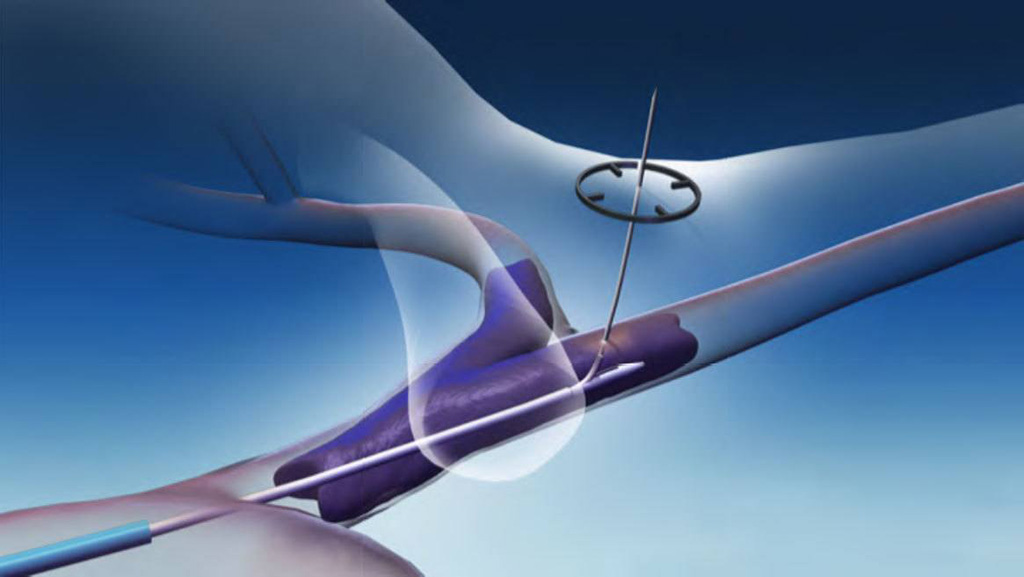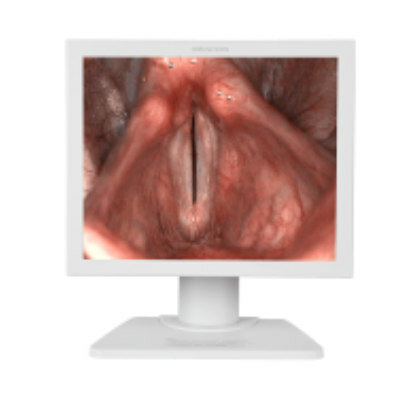Reverse Recanalization Device Facilitates Central Venous Access 
|
By HospiMedica International staff writers Posted on 30 Sep 2021 |

Image: The Bluegrass Vascular Surfacer System (Photo courtesy of Bluegrass Vascular)
A novel “inside-out” device assists upper body central venous catheter (CVC) placement in patients with venous obstructions or other conditions that preclude access by conventional methods.
The Bluegrass Vascular (San Antonio, TX, USA) Surfacer System is inserted through the right femoral vein, and then threaded through the patient's venous system to an exit point in the right internal jugular vein. A CVC can then be reliably placed into the right atrium, using the Surfacer itself as a guide under fluoroscopic image guidance. This “inside-out” approach allows time for the placement and maturation of a permanent arteriovenous fistula (AVF), improving patient outcomes and reducing cost of care for both hospitals and hemodialysis providers.
Added benefits of the “inside-out” approach include preserving the viability of secondary central veins for potential future use, and avoidance of the need for left-side catheter placement, which consequently enables maturation of permanent AVF access options in the left arm, while minimizing unnecessary access-related procedures and complications.
“The idea for the Surfacer System was born from seeing many patients with obstructed central venous systems who needed methods for life-saving vascular access,” said John Gurley, MD, founder of Bluegrass Vascular and developer of the Inside-Out concept. “The novel inside-out approach is an innovative and simple method that restores and preserves right-sided venous access, despite chronic occlusion, and retains the viability of other existing central veins.”
While AVFs are the preferred form of vascular access in most hemodialysis patients, thoracic CVCs still serve as an important treatment bridge until securing long-term AVF access. But obstructions occur in 40% of patients where hemodialysis is performed via a CVC. The current approach for most patients with central venous obstructions is to use an alternative vein, which reduces the ability to place and mature a functioning fistula, resulting in increased catheter days and costs.
Related Links:
Bluegrass Vascular
The Bluegrass Vascular (San Antonio, TX, USA) Surfacer System is inserted through the right femoral vein, and then threaded through the patient's venous system to an exit point in the right internal jugular vein. A CVC can then be reliably placed into the right atrium, using the Surfacer itself as a guide under fluoroscopic image guidance. This “inside-out” approach allows time for the placement and maturation of a permanent arteriovenous fistula (AVF), improving patient outcomes and reducing cost of care for both hospitals and hemodialysis providers.
Added benefits of the “inside-out” approach include preserving the viability of secondary central veins for potential future use, and avoidance of the need for left-side catheter placement, which consequently enables maturation of permanent AVF access options in the left arm, while minimizing unnecessary access-related procedures and complications.
“The idea for the Surfacer System was born from seeing many patients with obstructed central venous systems who needed methods for life-saving vascular access,” said John Gurley, MD, founder of Bluegrass Vascular and developer of the Inside-Out concept. “The novel inside-out approach is an innovative and simple method that restores and preserves right-sided venous access, despite chronic occlusion, and retains the viability of other existing central veins.”
While AVFs are the preferred form of vascular access in most hemodialysis patients, thoracic CVCs still serve as an important treatment bridge until securing long-term AVF access. But obstructions occur in 40% of patients where hemodialysis is performed via a CVC. The current approach for most patients with central venous obstructions is to use an alternative vein, which reduces the ability to place and mature a functioning fistula, resulting in increased catheter days and costs.
Related Links:
Bluegrass Vascular
Latest Critical Care News
- Pulse Oximeter Index Offers Non-Invasive Guides for Fluid Therapy
- 'Universal' Kidney to Match Any Blood Type
- Light-Based Technology to Measure Brain Blood Flow Could Diagnose Stroke and TBI
- AI Heart Attack Risk Assessment Tool Outperforms Existing Methods
- Smartphone Imaging System Enables Early Oral Cancer Detection
- Swallowable Pill-Sized Bioprinter Treats GI Tract Injuries

- Personalized Brain “Pacemakers” Could Help Patients with Hard-To-Treat Epilepsy
- Microscopic DNA Flower Robots to Enable Precision Medicine Delivery
- Origami Robots to Deliver Medicine Less Invasively and More Effectively
- Improved Cough-Detection Technology Aids Health Monitoring
- AI Identifies Children in ER Likely to Develop Sepsis Within 48 Hours
- New Radiofrequency Therapy Slows Glioblastoma Growth
- Battery-Free Wireless Multi-Sensing Platform Revolutionizes Pressure Injury Detection
- Multimodal AI to Revolutionize Cardiovascular Disease Diagnosis and Treatment
- AI System Reveals Hidden Diagnostic Patterns in Electronic Health Records
- Highly Sensitive On-Skin Sensing Monitor Detects Vitamin B6 and Glucose in Sweat
Channels
Surgical Techniques
view channel
Robotic Assistant Delivers Ultra-Precision Injections with Rapid Setup Times
Age-related macular degeneration (AMD) is a leading cause of blindness worldwide, affecting nearly 200 million people, a figure expected to rise to 280 million by 2040. Current treatment involves doctors... Read more
Minimally Invasive Endoscopic Surgery Improves Severe Stroke Outcomes
Intracerebral hemorrhage, a type of stroke caused by bleeding deep within the brain, remains one of the most challenging neurological emergencies to treat. Accounting for about 15% of all strokes, it carries... Read morePatient Care
view channel
Revolutionary Automatic IV-Line Flushing Device to Enhance Infusion Care
More than 80% of in-hospital patients receive intravenous (IV) therapy. Every dose of IV medicine delivered in a small volume (<250 mL) infusion bag should be followed by subsequent flushing to ensure... Read more
VR Training Tool Combats Contamination of Portable Medical Equipment
Healthcare-associated infections (HAIs) impact one in every 31 patients, cause nearly 100,000 deaths each year, and cost USD 28.4 billion in direct medical expenses. Notably, up to 75% of these infections... Read more
Portable Biosensor Platform to Reduce Hospital-Acquired Infections
Approximately 4 million patients in the European Union acquire healthcare-associated infections (HAIs) or nosocomial infections each year, with around 37,000 deaths directly resulting from these infections,... Read moreFirst-Of-Its-Kind Portable Germicidal Light Technology Disinfects High-Touch Clinical Surfaces in Seconds
Reducing healthcare-acquired infections (HAIs) remains a pressing issue within global healthcare systems. In the United States alone, 1.7 million patients contract HAIs annually, leading to approximately... Read moreHealth IT
view channel
Printable Molecule-Selective Nanoparticles Enable Mass Production of Wearable Biosensors
The future of medicine is likely to focus on the personalization of healthcare—understanding exactly what an individual requires and delivering the appropriate combination of nutrients, metabolites, and... Read moreBusiness
view channel
Philips and Masimo Partner to Advance Patient Monitoring Measurement Technologies
Royal Philips (Amsterdam, Netherlands) and Masimo (Irvine, California, USA) have renewed their multi-year strategic collaboration, combining Philips’ expertise in patient monitoring with Masimo’s noninvasive... Read more
B. Braun Acquires Digital Microsurgery Company True Digital Surgery
The high-end microsurgery market in neurosurgery, spine, and ENT is undergoing a significant transformation. Traditional analog microscopes are giving way to digital exoscopes, which provide improved visualization,... Read more
CMEF 2025 to Promote Holistic and High-Quality Development of Medical and Health Industry
The 92nd China International Medical Equipment Fair (CMEF 2025) Autumn Exhibition is scheduled to be held from September 26 to 29 at the China Import and Export Fair Complex (Canton Fair Complex) in Guangzhou.... Read more













